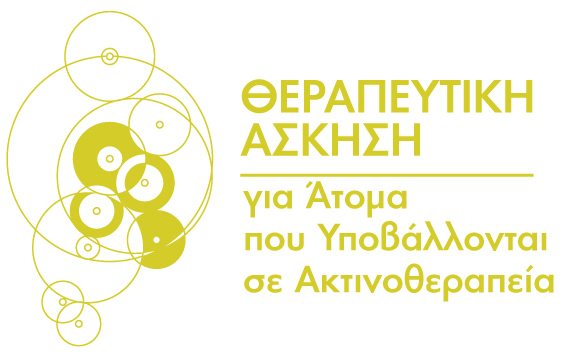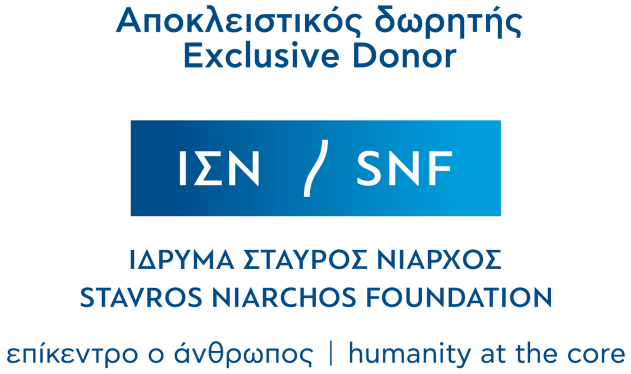Patients Undergoing Radiotherapy

Η άσκηση στην ακτινοθεραπεία
Εάν υποβάλλεστε σε ακτινοθεραπεία είναι πιθανό να έρθετε αντιμέτωποι με κοινές παρενέργειες της θεραπείας, όπως η κόπωση, γεγονός που θα σας κάνει να προτιμήσετε περισσότερο την ξεκούραση από τη σωματική δραστηριότητα. Αντίθετα, πρόσφατες μελέτες έχουν δείξει ότι η άσκηση ωφελεί τα περισσότερα άτομα τόσο κατά τη διάρκεια όσο και μετά τη θεραπεία. Το να είστε σωματικά δραστήριος/α μπορεί να βοηθήσει στη διαχείριση των παρενεργειών της θεραπείας, να επιταχύνει την ανάρρωση και να βελτιώσει την ποιότητα ζωής σας. Η άσκηση μπορεί ακόμη και να βελτιώσει τον τρόπο με τον οποίο ανταποκρίνεστε στη θεραπεία.
Σήμερα γνωρίζουμε πως οι ευεργετικές επιδράσεις της άσκησης στον καρκίνο δεν περιορίζονται μονάχα σε γενικά οφέλη ευεξίας όπως σε μείωση του άγχους, των καταθλιπτικών συμπτωμάτων και της κόπωσης, αλλά και σε ειδικά οφέλη. Συγκεκριμένα, έχει περιγραφεί πως με την άσκηση κατά την περίοδο της ακτινοθεραπείας προκύπτει πλήθος μεταβολών στο μικροπεριβάλλον του όγκου που σχετίζονται με βελτίωση της αποτελεσματικότητας των θεραπειών. Κατά την άσκηση, συμβαίνουν φυσιολογικές και ευεργετικές αλλαγές όπως αύξηση της αιμάτωσης, της κατανάλωσης οξυγόνου, της θερμοκρασίας του σώματος και της έκκρισης ορμονών, όπως οι κατεχολαμίνες και οι μυοκίνες. Οι παραπάνω μεταβολές μπορεί να επηρεάσουν θετικά την αποτελεσματικότητα της ακτινοθεραπείας, αυξάνοντας παράλληλα τη συνολική ανοχή του οργανισμού στην αγωγή.
Πώς επιδρά η άσκηση στον καρκίνο;
• Μειώνει την εμφάνιση προδιαθεσικών παραγόντων που προκαλούν καρκίνο.
• Επηρεάζει θετικά τα επίπεδα ορμονών που σχετίζονται με την εμφάνιση του καρκίνου.
• Ενισχύει το ανοσοποιητικό σύστημα του οργανισμού έναντι των καρκινικών κυττάρων.
• Βελτιώνει τα συμπτώματα της κόπωσης που σχετίζονται με τον καρκίνο.
• Περιορίζει τις παρενέργειες της ακτινοθεραπείας.
• Βελτιώνει την ποιότητα ζωής των ασθενών, την αυτοπεποίθησής τους και την ψυχολογίας τους συμβάλλοντας στην πρόληψη και αποκατάσταση της νόσου.
Σκοπός μας είναι η δημιουργία ενός εξατομικευμένου προγράμματος άσκησης κατά την ακτινοθεραπεία, που απευθύνεται σε διαφορετικές ηλικίες και διαφορετικά επίπεδα φυσικής κατάστασης.
Προσδοκώμενο Αποτέλεσμα για τους Συμμετέχοντες
Το πρόγραμμα θα οδηγήσει σε βελτίωση της φυσικής και ψυχικής σας κατάστασης, σε μείωση της κόπωσης και σε άμβλυνση των παρενεργειών από τις θεραπείες.
Τα χαρακτηριστικά της άσκησης έχουν σχεδιαστεί με βάση πρόσφατες επιστημονικές πληροφορίες.
Τα δυνατά σημεία του προγράμματος είναι η εύκολη πρόσβαση στο πρόγραμμα και η εφαρμογή εξατομικευμένων μεθόδων θεραπευτικής άσκησης.
Ενδεικτικός Τρόπος Λειτουργίας του Προγράμματος Θεραπευτικής Άσκησης
• Αξιολόγηση από Γιατρό, Φυσικοθεραπευτή και Καθηγητή Φυσικής Αγωγής
• Παρακολούθηση βιοχημικών δεικτών κατά την έναρξη, κατά τη διάρκεια και κατά την ολοκλήρωση του προγράμματος.
• Ανθρωπομετρικός έλεγχος και σύσταση σώματος.
• Αξιολόγηση του επιπέδου φυσικής κατάστασης.
• Προσφορά προγράμματος καθ’ όλη τη διάρκεια της ακτινοθεραπείας.
• Το πρόγραμμα θα εφαρμόζεται πριν ή μετά την ακτινοθεραπευτική συνεδρία, 3 φορές την εβδομάδα, από την έναρξη μέχρι τη λήξη του κύκλου θεραπειών
• Δημιουργία ηλεκτρονικού ιατρικού φακέλου.
• Επιπλέον παρακολούθηση μέσω ηλεκτρονικών ερωτηματολόγιων.
• Στο τέλος κάθε συνεδρίας θα καταγράφεται η κόπωση και η απόδοση.
• Συνεχής ανατροφοδότηση.
• Με την ολοκλήρωση του προγράμματος, θα δοθεί τρίμηνο πρόγραμμα άσκησης με στόχο τη συνέχιση της άσκησης
• Επαναξιολόγηση στους 3 καθώς και στους 6 μήνες μετά την ολοκλήρωση του προγράμματος.
Τα Οφέλη συμμετοχής σε ένα πρόγραμμα άσκησης κατά την Ακτινοθεραπεία
Ο αγώνας εναντίον του καρκίνου είναι μια μακροχρόνια διαδικασία. Σύμφωνα με πρόσφατες μελέτες, ένα πολύ μικρό ποσοστό καρκινοπαθών συμμετέχουν σε προγράμματα άσκησης παρά το γεγονός ότι η προσθήκη της άσκησης στην καθημερινότητα του καρκινοπαθή έχει αποδειχθεί ότι μπορεί να βελτιώσει σημαντικά τη σωματική και την ψυχολογική τους κατάσταση και σε πολλές περιπτώσεις να αυξήσει το προσδόκιμο ζωής.
«Η άσκηση είναι θεραπεία» και οι ασθενείς χρειάζονται:
• Πληροφόρηση
• Κίνητρα
• Συνεχή ανατροφοδότηση
• Διαρκή έλεγχο
• Εύκολη πρόσβαση σε προγράμματα

